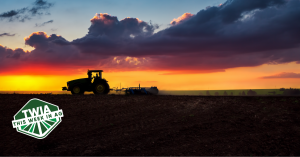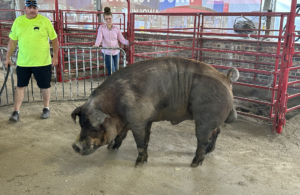The recent fertilizer market may be best described by two catch phrases: “wait-and-see” and “just in time.” In the fall of 2021, sky-rocketing energy prices pointed toward looming inflation and an inevitable rise in fertilizer prices. Many savvy growers, including those aligned with the regen ag movement, hedged their bets by purchasing crop nutrients that fall for the 2022 growing season. Fertilizer prices spiked to record levels in the spring of 2022, due to inflation, supply chain issues, labor issues and the war in Ukraine.
Since that time, we’ve seen a decline in wholesale fertilizer prices, although they remain at high levels. With the worst seemingly behind them, many growers choose to “wait and see” what the market would bear in 2023. This approach is common in the South, as farmers have many options on what to plant. It’s not uncommon for these growers to plant a combination of cotton, corn, soybeans, rice, peanuts, milo, wheat, and even fruits and vegetables, based on market opportunities, input prices and weather projections. This not only delays seed purchases but also the inputs required to grow them.
In the Midwest, most growers have two viable options: corn and soybeans. Yet this past year, several in the Corn Belt also took the wait-and-see approach. Many anticipated that fertilizer prices would, or had to, decline. And they did. Rising interest rates – a by-product of inflation, as the Fed attempts to bring down inflation – also played a role. Operating loans now sit between 8-9%, triple what they were two years ago. High interest rates disincentivize early purchasing. This wait-and-see approach led to the escalation of a “just-in-time” product application strategy. What’s in store for 2024? Commodity prices are still relatively strong and wholesale fertilizer prices continue to dip. Last month we saw drops in anhydrous ammonia (15%), UAN 32% (12%), DAP/MAP/Urea (7%) and potash (6%). These factors typically encourage yield chasing, a catalyst for increasing fertilizer usage. Plus, grower sentiment is starting to gradually improve. So, what about this trending “just-in-time” application strategy? Is it here to stay? Several factors suggest so. It’s doubtful interest rates return to 2020 levels anytime soon. In fact, some ag lenders I know anticipate further interest rate hikes this year. A big driver may be the growing sustainability and regenerative agriculture movement, which emphasizes the spoon-feeding of fertilizers throughout the season versus applying the bulk of nutrients in the early spring or previous fall. Another factor is the sophistication and adoption of tissue and soil sampling, which also leads to a season-long application strategy and by its nature, fosters a “wait-and-see” approach. As growers continue to gain experience with these methods and resources, we may see a more permanent shift in both how and when crop nutrients are applied and purchased.
Soon, combines will be rolling across the fruited plain. But before this season’s harvest of America’s most popular crop – Number 2 yellow dent corn – begins, the seeds for next year’s corn crop are already being gathered. The process of growing and harvesting production seed differs greatly from commercially grown corn. Check out this short video below where I explain how seed corn is made:
Expect crops to mature rapidly this week, based on extreme heat levels across most of the country. I’m currently in Iowa, where temperatures are expected to reach 105 degrees this week, with no rain in sight.
Few venues epitomize country life like a state fair. One of the best is the Iowa State Fair, which I attended over the weekend. Among the fleets of cattle trailers and prize-winning produce, where else can you take in the big boar contest (below is a photo of the 1,000-pound Grand Champion, Sasquatch), see a life-size replica of a cow made entirely from butter, have a pork chop on a stick followed by a fried Twinkie, and check out top country music artists? Now that’s Americana.
Related Posts

BHN’s Lyndon Smith Meets with Senator James E. Risch (R-ID)
BHN President/CEO Lyndon Smith (far left) meets with Idaho Senator James E. Risch (third from left) and others at the Agricultural Retailers Association (ARA) Winter Board Meeting in Washington, D.C. BHN’s leonardite mine is located in Idaho.

This Week in Ag #57
“What are you planting this year?” That may not sound like a trick question, considering it’s already mid-March. But ask any farmer south of the Mason-Dixon line that question and you’ll likely see their shoulders shrug. You see, unlike in the West, where permanent crops and processor contracts make planting decisions more straight-forward, or in the

Bio Huma Netics Hosts 2016 World Conference
Bio Huma Netics, Inc. (BHN), hosted its 2016 World Conference on October 25–28 in the cities of Mesa and Gilbert, Arizona. This edition of the biannual Conference had over 150 attendees from 20 countries representing distributors, customers, and staff from BHN’s product lines of Huma Gro®, Huma Gro® Turf, and Probiotic Solutions®.


